Scars on the legs can include both raised and discolored scars that can impact their appearance. Thankfully, scars on the legs can be treated by multiple techniques including medical procedures and various medications that can help to reduce their appearance.
Scars on the Legs – How They Can Be Treated
In general, the best way to reduce the look of scars on the legs is to properly treat the wounds on the legs so there is less of a chance of scars forming. Some of the ways to properly treat wounds on the legs include cleaning the injured area, covering the skin with a bandage, stitching the wound (if necessary), and applying petroleum jelly to the wound to keep it moisturized. Some additional options to treat the wound include laser therapy, pressure therapy, and cryosurgery.
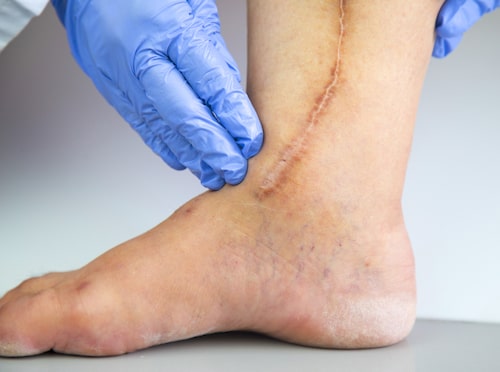
Scars on the Legs – Types of Scars
It is important to remember that the treatment used on the scar depends on the type of scar as well as the cause of the scar. The most common types of scars include:
- Atrophic scars which are flat or depressed scars on the skin. These scars, which include acne scars, can often be a darker color than the skin that surrounds them.
- Keloid scars are scars that are raised and thick in appearance. This type of scar is dark in color and grows outwards from the impacted area.
- Hypertrophic scars are darker than the surrounding skin and they are located over the impacted skin.
- Contracture scars can form after a burn in areas where a large portion of the skin has been damaged or lost. The skin that surrounds this type of scar will be tight and shiny in appearance. Scars from burns form due to the extra collagen that the body produces to help the burn heal. In addition to contracture scars, burns can also cause keloid scars and hypertrophic scars.
Scars on the Legs – How to Treat Atrophic Scars
An atrophic scar has a depressed look because the skin that has been damaged is not able to regenerate any tissue. A chemical peel can be placed on the scar to destroy the damaged skin layer so healthier skin is revealed under the older, damaged skin. Filler can be injected into the targeted area to raise the indented scar, so it matches the look of the surrounding skin. In addition, a punch excision uses a needle to remove the scar tissue and then the area is closed with stitches.
Scars on the Legs – Natural Remedies
Essential oils encourage the growth of skin cells in the impacted area. Some of the most common essential oils that can be used to treat scars on the legs include lavender oil, rosehip seed oil, tea tree oil, and geranium oil.
A massage is able to flatten or soften the scar as well as prevent scar tissue from sticking to bones, nerves, blood vessels, and muscles.
The removal of dead skin cells is accomplished by exfoliation, and this can be performed by using a loofah and an exfoliating cleaner. After the exfoliation process is over, the area should be dried, and a moisturizer should be applied to it.
Scars on the Legs – Remedies to Perform at Home
Medical tape can be placed over the wound while sunscreen can be used on scabs to prevent any additional discoloration. Silicone sheets can be purchased at a store, and they should be placed on the wound after it is closed.
Once the wound closes and heals, this is the time to try a massage on the impacted area. Once the scab has fallen off the body, sunscreen should be used to help the wound heal faster and avoid any additional discoloration. Plus, moisturizers that include essential oils help to keep the skin supple.
Scars on the Legs – Help from a Doctor
A licensed dermatologist can apply a dressing that exerts pressure on the wound and helps speed up the healing process. Laser therapy can be performed to remove damaged skin while cryosurgery freezes the scar and destroys scar tissue. A corticosteroid injection can be placed directly into the scar in order to reduce its size.
The doctor can also perform treatments such as subcision, skin needling and punch excision to reduce the appearance of the scar.
Scars on the Legs – How to Start the Treatment
Whether the patient wants to perform their treatment at home or have a licensed and trained doctor address the look of the scar, the first step is to consult with a doctor and have the medical professional examine the current condition of the scar. The doctor can determine the severity of the scar as well as the ideal treatment for the scar. The doctor can also set realistic expectations so the patient will know the type of results they can expect to see after treating their scar.

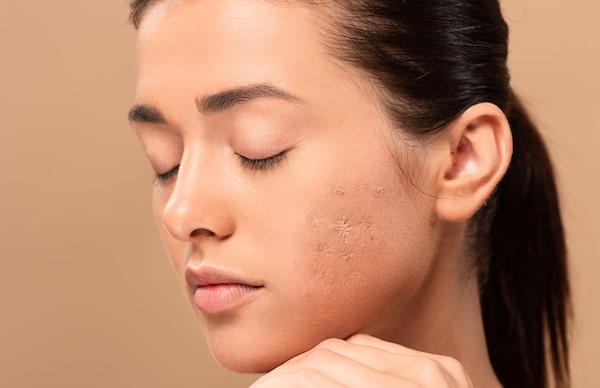
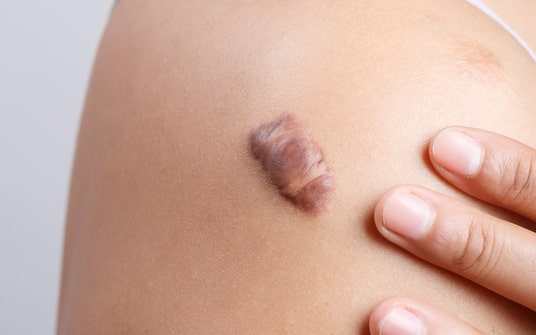
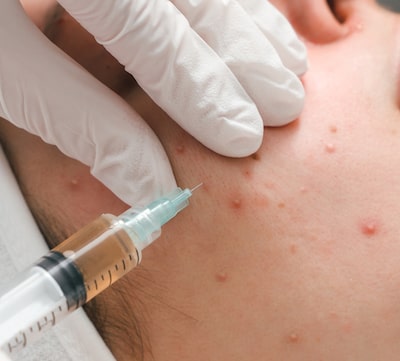
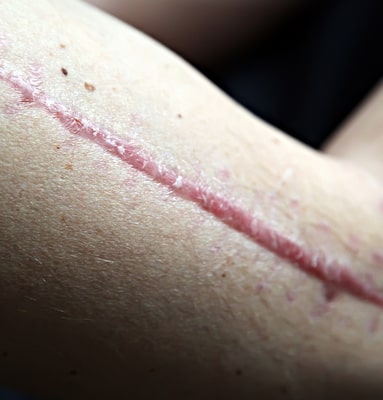 Atrophic scars are defined by the loss of tissue on the skin of the injured person. They can appear in different ways including depressed or flat against the upper layer of the skin. If you see a scar with darker skin pigmentation than other areas of the skin, it might be an atrophic scar. A couple of examples of atrophic scars are acne scars and chickenpox scars.
Atrophic scars are defined by the loss of tissue on the skin of the injured person. They can appear in different ways including depressed or flat against the upper layer of the skin. If you see a scar with darker skin pigmentation than other areas of the skin, it might be an atrophic scar. A couple of examples of atrophic scars are acne scars and chickenpox scars. Scars will become naturally lighter over time, but they will never fully disappear. However, there are many efficient
Scars will become naturally lighter over time, but they will never fully disappear. However, there are many efficient 
 When Camille Grammer, one of the stars of the Real Housewives of Beverly Hills, learned she had cancer for a second time, she revealed her diagnosis to her followers on Instagram. She included a thank you note to her doctor as well as a warning to women. “Thank you Dr. Beth Karlan for removing those pesky cancer cells. You are amazing!” Camille posted a photo of herself and her doctor at the hospital, “This is my second cancer diagnosis. Thank God, we found it early. (squamous cell carcinoma).” Camille continued by saying, “Early detection is key. My cancer was removed and I’m resting at home.” She went on to say, “Ladies listen to your bodies. If something doesn’t seem right go for a checkup. Don’t put it off. Annual checkups are important.”
When Camille Grammer, one of the stars of the Real Housewives of Beverly Hills, learned she had cancer for a second time, she revealed her diagnosis to her followers on Instagram. She included a thank you note to her doctor as well as a warning to women. “Thank you Dr. Beth Karlan for removing those pesky cancer cells. You are amazing!” Camille posted a photo of herself and her doctor at the hospital, “This is my second cancer diagnosis. Thank God, we found it early. (squamous cell carcinoma).” Camille continued by saying, “Early detection is key. My cancer was removed and I’m resting at home.” She went on to say, “Ladies listen to your bodies. If something doesn’t seem right go for a checkup. Don’t put it off. Annual checkups are important.” When it comes to plastic surgery, the scars after the procedure vary from person to person. There are many factors which influence healing after surgery and the way we scar. The
When it comes to plastic surgery, the scars after the procedure vary from person to person. There are many factors which influence healing after surgery and the way we scar. The 
